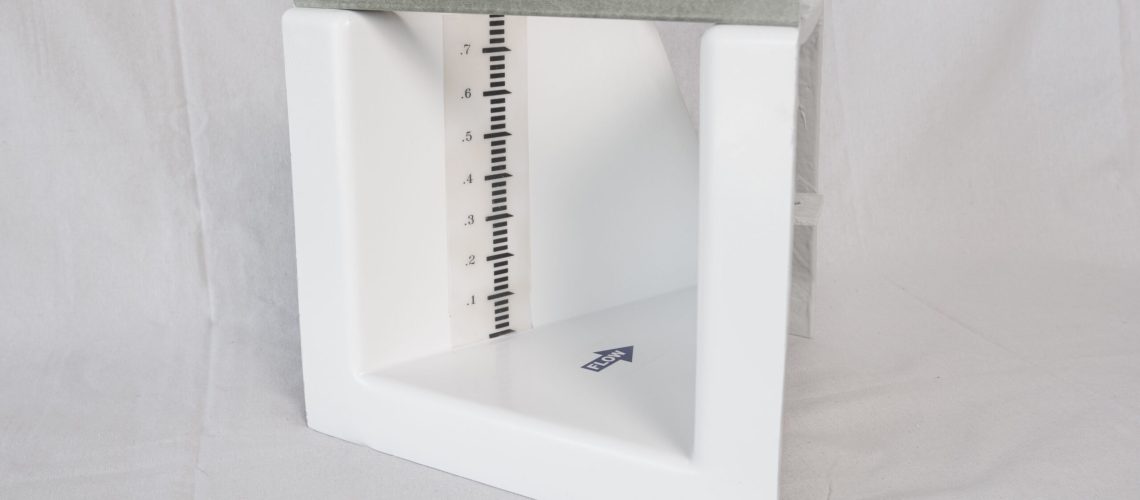While there are plenty of methods used to read the measurements in a flume, the staff gauge is among the most common. This is largely because a staff gauge is easy to install and has numbers you can simply read based on where the flow level is within the flume. Ensuring that you’re reading it correctly can be more difficult than you might think, however, so it’s best to understand exactly what to look for. Learn how to read a staff gauge and ensure that you’re getting accurate measurements.
Standard Gauges
When you’re using a flume with vertical walls, staff gauges are fairly easy to read. These standard gauges will have a series of horizontal bars set in a vertical succession with the more pronounced bars marked with measurements. Typically, one side will measure centimeters while the other measures feet. Given the fact that feet are so much larger than centimeters, the increments on the foot side tend to be measured in decimal points. For example, the pronounced horizontal markers will have labels such as 0.1, 0.2 and so on.
Standard gauges will have these markers evenly spaced all the way to the top of the gauge, starting at the bottom. The only way to mess up the measurements using a standard gauge is to install it incorrectly. The gauge must be vertical and perpendicular to the floor of the flume. The zero point must also match the zero point of the flume. If the gauge is crooked or placed incorrectly along the vertical line, your readings will be off.
Accounting for Slope
Some flumes don’t include vertical walls. Instead, their walls are slanted, leaving no way to install a vertical staff gauge. While standard gauges measure water depth directly, a slanted gauge wouldn’t give an accurate reading of the flow’s depth. Given that the gauge would slant outward, it would read that the flow is much deeper than it really is. Because of this, adjustments have to be made.
In some cases, sloped gauges are easy to work with. Imagine you have a trapezoidal flume, for example, and need to measure using a staff gauge. Using a standard gauge applied to the sloped wall, you can get accurate measurements by simply applying a geometric constant to your calculation. Just take that one extra step, and you’ve got accurate readings.
Calibrated Gauges
Some flumes like a Palmer-Bowlus are a bit more difficult because the tops of their walls are fairly vertical, while the flume slopes inward as it approaches the floor. In these cases, you may want to opt for a pre-calibrated staff gauge. This is a gauge that has its increments altered to account for the slope. Installation must be flawless if you want accurate readings, as the calibrated adjustments, when wrongly placed, can lead to widely inaccurate measurements. Fortunately, a correct install means it’s as easy to read and work with as a standard vertical gauge on a Parshall flume.
Staff Gauges and Flumes From Tracom
Now that you know how to read a staff gauge, it’s time to get one of your own. At Tracom, we offer a wide variety of flume accessories including staff gauges. We can also work with you to develop a flume and an accompanying staff gauge that’s uniquely suited for your flow channel conditions. Contact us today to get started!


